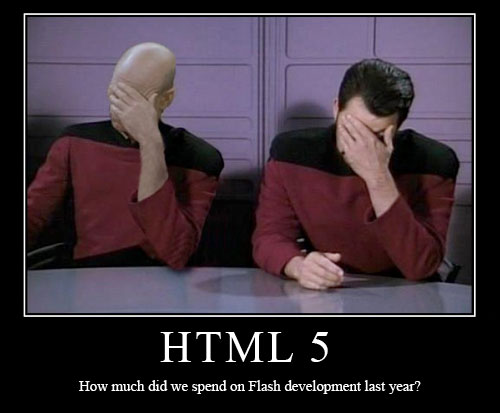
What is HTML 5?
If you even occasionally read tech news, you've probably heard about HTML 5 – the upcoming standard for the HTML markup language. As you probably know, HTML at its core is just a set of instructions which tells your web browser what it should display. Although the landscape of the internet has changed dramatically in the past 10 years, HTML has changed remarkably little. HTML 5 is an enhancement to the existing HTML standard that seeks to modernize this simple language and make it easier for content creators to share information with the world. This post is a laymen's overview to HTML 5, seeking to answer the most important question of all: “why do I care?”
What is HTML 5's killer feature?
One of the big things that is getting people excited about HTML 5 is the ability to embed video natively within an HTML page without the need for Flash or proprietary video codecs. While providers like YouTube and Vimeo have made it easy for the average person to share video with others, HTML 5 will allow this video to be shared across a wealth of different devices and platforms without 3rd party technologies like Flash getting in the way.
While that feature gets the most buzz, there are a number amount of upgrades to the HTML language which will substantially change the internet within the next 5 years when adoption reaches a critical mass. HTML 5 will see a lot of things that used to be non-trivial to implement, like date pickers, slider controls, etc, – supported natively within the HTML 5 language.
How will HTML 5 change the web?
I predict that we’ll see web development as an industry dramatically change within the next 3-5 years as a lot of the front-end development strategies that have been prevalent for the last decade are pushed towards the obsolete. What makes me the most excited about HTML 5, however, is its support for CSS3 – an upgrade to the current CSS standards. CSS3 will make it much easier to produce well designed websites that maintain cross-browser compatibility. We will start to see things like dropshadows and filter effects, custom fonts, and more – all available natively to the webrowser. This will mean long-term shifts in the search industry as web designers and developers are able to do more without hacky javascript and images that search bots can’t read.
HTML 5 will be the first standard of HTML designed with mobile devices in mind. HTML 5 will a crucially important stepping stone as the worlds of desktop and mobile computing are finally combined.
What are the Risks and Long Term Considerations for HTML 5?
As a technology, HTML 5 is looking extremely promising and there are a lot of larger companies beginning to invest into its long-term future. However, as with anything considered an open standard, there are a large number of people and corporations with vested interests involved in committee approvals. Any final decisions on what HTML 5 will and won’t support may be a long time coming.
For most industry professionals, HTML 5 is not attractive in the short-term (< 1yr) simply because Microsoft browsers will not fully support the HTML 5 standard until release of IE 9. IE 8 beta releases support some of the basic features of HTML 5 (unfortunately not video), but IE 9 will be the first usable Microsoft implementation. If we are to project adoption of IE web browsers using historical data, one could predict that HTML 5 would not be relevant as a viable technology for at least 2 years. In this particular case, however, I think that industry super-players like Facebook and Google will help spur users towards HTML 5 browsers with “HTML 5 only” advancements which we’ll start to see in the coming months.
